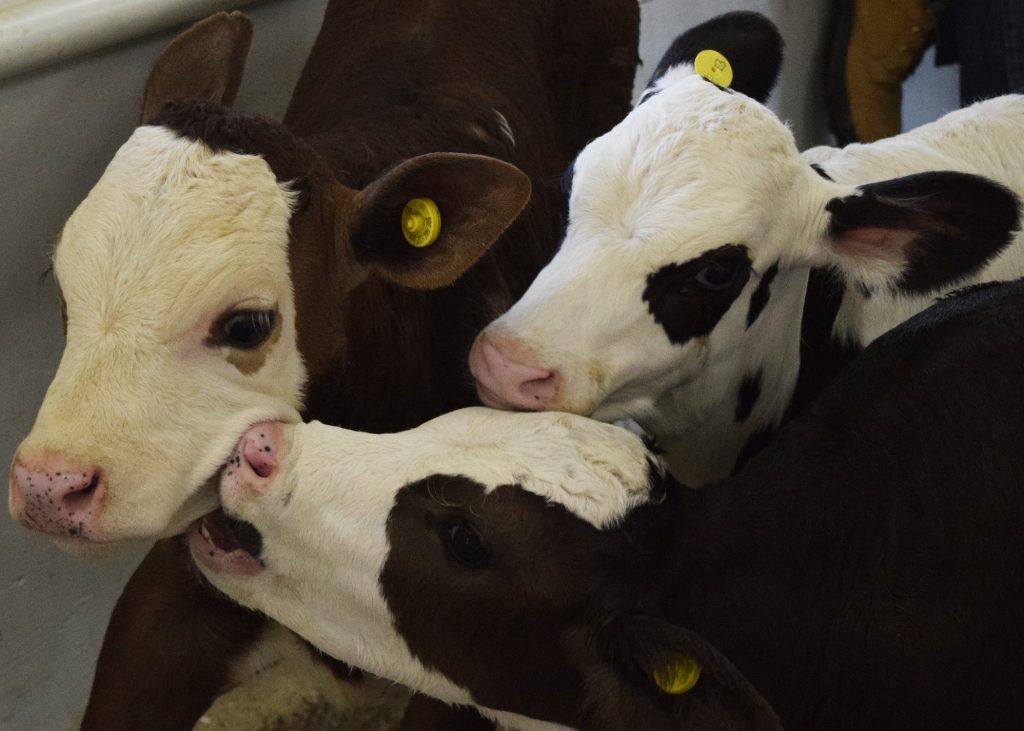Healthy Calf Conference
Follow to stay up-to-date on all Healthy Calf Conference updates. Speaker announcements, sponsorship information, registration announcements, and more.
Cross-sucking is a common behavioral issue in young calves that can impact welfare and productivity. It occurs when calves suckle on the ears, navels or tails of their penmates, often due to unmet suckling needs after milk feeding. While not inherently harmful, this behavior can lead to skin irritation, infections, and in heifers, potential udder damage that may affect future milk production.
Causes of cross-sucking

Calves naturally have a strong suckling instinct, usually satisfied when nursing from their dam. However, when fed whole milk or milk replacer from a bucket, this instinct may remain unfulfilled.
Factors contributing to cross-sucking include:
Impact on calf health and welfare
Cross-sucking can cause hair loss, skin abrasions, and bacterial infections. If directed toward the udder, it may damage mammary tissues, affecting future milk yields. Additionally, chronic stress from unmet suckling needs can weaken the immune system, slow growth, and make calves more susceptible to illness.
In some cases, cross-sucking behaviors escalate into tail biting, another damaging practice caused by frustration and environmental stressors. Bucket-fed, group-housed calves are particularly prone, as rapid milk consumption fails to satisfy their natural suckling urge. Nutritional deficiencies and boredom further contribute to tail biting, making prevention essential.
Solutions to reduce cross-sucking
Recent research highlights the effectiveness of nipple water troughs in reducing cross-sucking behavior in dairy calves. These troughs provide a more natural suckling experience, helping satisfy the calves’ instinctual need to nurse and reducing frustration. Studies show that calves using nipple troughs exhibit significantly lower rates of cross-sucking compared to those drinking from open troughs. Additionally, nipple troughs may improve hygiene by limiting contamination risks and enhancing water intake efficiency, contributing to better overall health.
Other proven strategies to minimize cross-sucking include:
Researchers continue to study how different trough designs impact calf behavior and welfare, with promising early results showing improvements in both health and growth. Integrating these findings into calf-rearing practices can enhance welfare and productivity, making nipple water troughs a valuable tool for producers aiming to raise healthier, more content calves.
Follow to stay up-to-date on all Healthy Calf Conference updates. Speaker announcements, sponsorship information, registration announcements, and more.
The Codes of Practice are nationally developed guidelines for the care and handling of farm animals. They serve as our national understanding of animal care requirements and recommended practices.